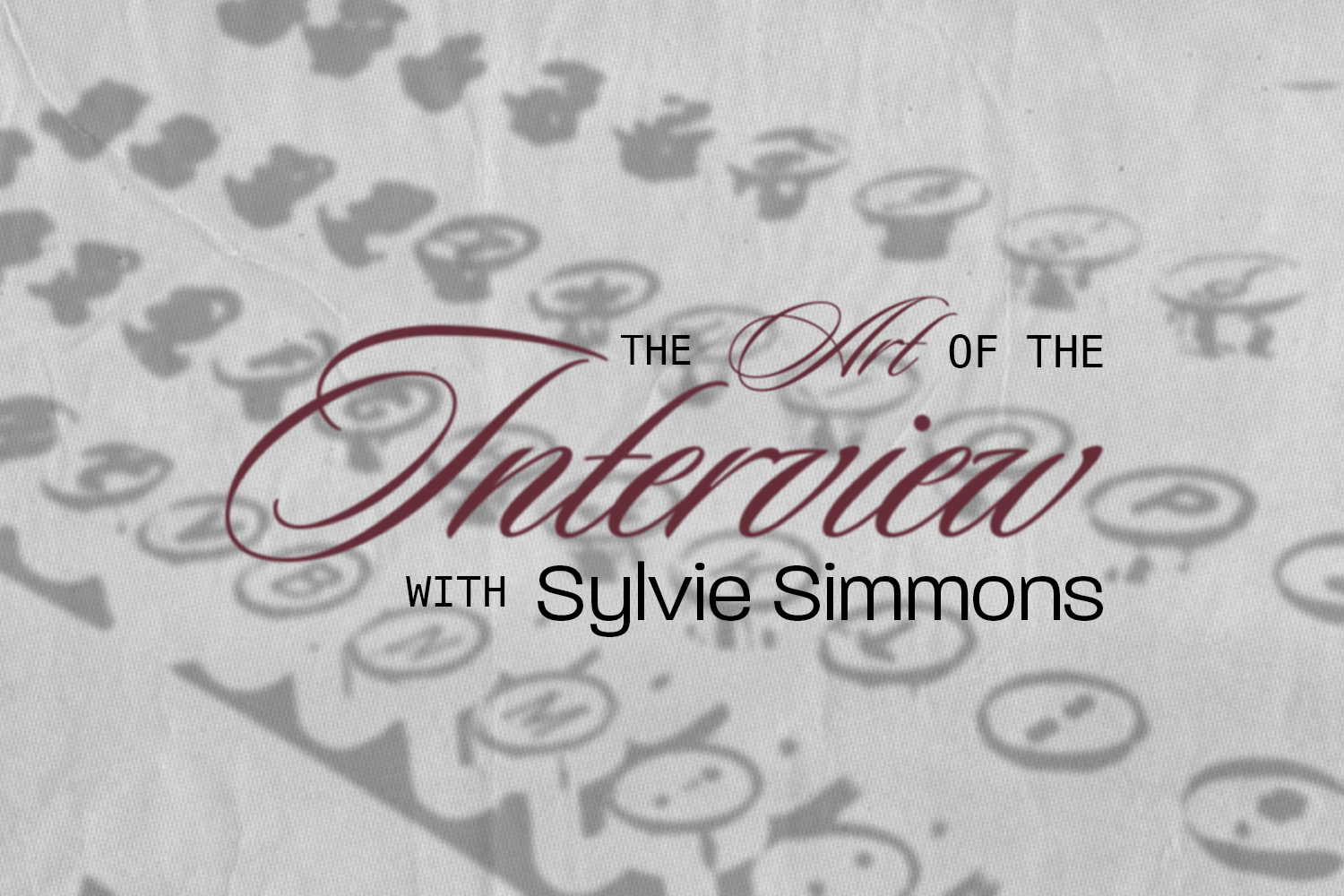Music journalist and performer Sylvie Simmons has seen it all. From interviewing legends like Michael Jackson and Johnny Cash to adapting her craft during the height of Zoom, Simmons has remained a steady voice in the evolving world of music journalism. Sitting down with her during a private group interview felt like getting a backstage pass to a different era where cover stories were typed on typewriters and artists didn’t just go viral; they lived in the grooves of vinyl records.
Interviewing a rockstar might sound glamorous, but it’s often a race against the clock. “We typically get 30 or 45 minutes,” she says. “There’s a constant pinball going around your head trying to make sure you get everything.” Sometimes, that means having to redirect artists mid-rant—whether they’re philosophizing about sound or, surprisingly, lawnmowers. “You have to politely jump in and change the topic.”
Even seasoned journalists carry regrets. For Simmons, it was missing the chance to sit down with Bob Dylan. “They were offering 15 minutes for a roundtable and wanted a cover,” she recalls. “We were a monthly magazine. We worked two months in advance. I said, ‘I can’t do that, we need a half hour minimum.’” In retrospect, the missed opportunity stings—but it speaks to her dedication to in-depth storytelling.
Today’s music coverage looks vastly different. Platforms like TikTok have shortened attention spans—and word counts. “It changes from pages to word count,” Simmons says. “Back on a typewriter, no one would count each word. It took a sort of freedom away.” Most interviews are now over Zoom, a shift she believes dilutes the experience. “If you aren’t breathing the same air, it’s different. You don’t get the humanness.”
Simmons is known for pulling back the curtain on celebrity personas. “I realized I wasn’t scared for 45 minutes,” she says of a moment early in her career. “When Frank Zappa was being rude, having the courage to speak up about it—you have to be human yourself.” That courage led to a deeper understanding of her subjects. “They are human. You can’t forget that.”
As journalism adapts to digital media, Simmons sees the industry as a “tug of war.” While platforms like Substack and digital newspapers offer new spaces, the landscape is shifting. “I was lucky to work in a different time,” she reflects.
Her process has always been meticulous. Simmons recorded interviews and kept transcripts, often for a month, to make sure every detail was accurate. “Live shows were a big part of what we did back then,” she says. “It’s a lot of work but worth it.”
Some of her most memorable interviews took place in the homes and studios of artists. Take Michael Jackson: “At the end of the interview he said, ‘Would you like to see my studio?’ As soon as I got in that room, he changed into Michael Jackson.” Despite his fame, he was strikingly isolated. “He was the loneliest person I’ve ever met.”
Not every artist is hiding behind a mask. “Johnny Cash was exactly as he was out there,” she says, marveling at his authenticity.
Simmons’ path into journalism wasn’t carefully charted. She applied to different publications and ended up writing for a teen magazine. She stated that she was at the right place at the right time. That serendipity launched a lifelong career most could only dream of. Yet, through it all, her passion for music remains constant. She still writes songs and makes music today. Simmons even performed at Arnold Hall where I had the pleasure of attending the evening event. My personal favorite songs from her concert had to be “Sweet California,” “Midnight Cowboy,” and “Hard Act to Follow.” I found myself immersed into the world of this beautiful soul. The bright lights, guitarist, and accordion player, added to the ambiance. The soft melodies of each song felt like a warm greeting from someone I have not met in a long time. Her lived experience and undeniable sense of sincerity bursts through her music and shows every bit of who she is. If you’ve met Simmons, you’d know what I mean.
At its core, Simmons’ work is about deep listening—catching the nuances, the contradictions, the things left unsaid. Whether in a smoky studio or over a glitchy Zoom call, her interviews remind us that behind every legend is a living, breathing human being, which is something that I had to remind myself in her presence. Listening to her quiet yet certain speaking voice break through the deafening silence in the still room, while discussing the highlights of her career. Subtle things about Sylvie Simmons captivated me. The way she would stare off as she would recall interviews and the way she felt as a nervous young woman to the awkward moments with stars who were less than kind, it felt as though she herself went back to that time and lived through it a second time.
Words by Jade Pettyjohn
Graphic by Emma Sellner

